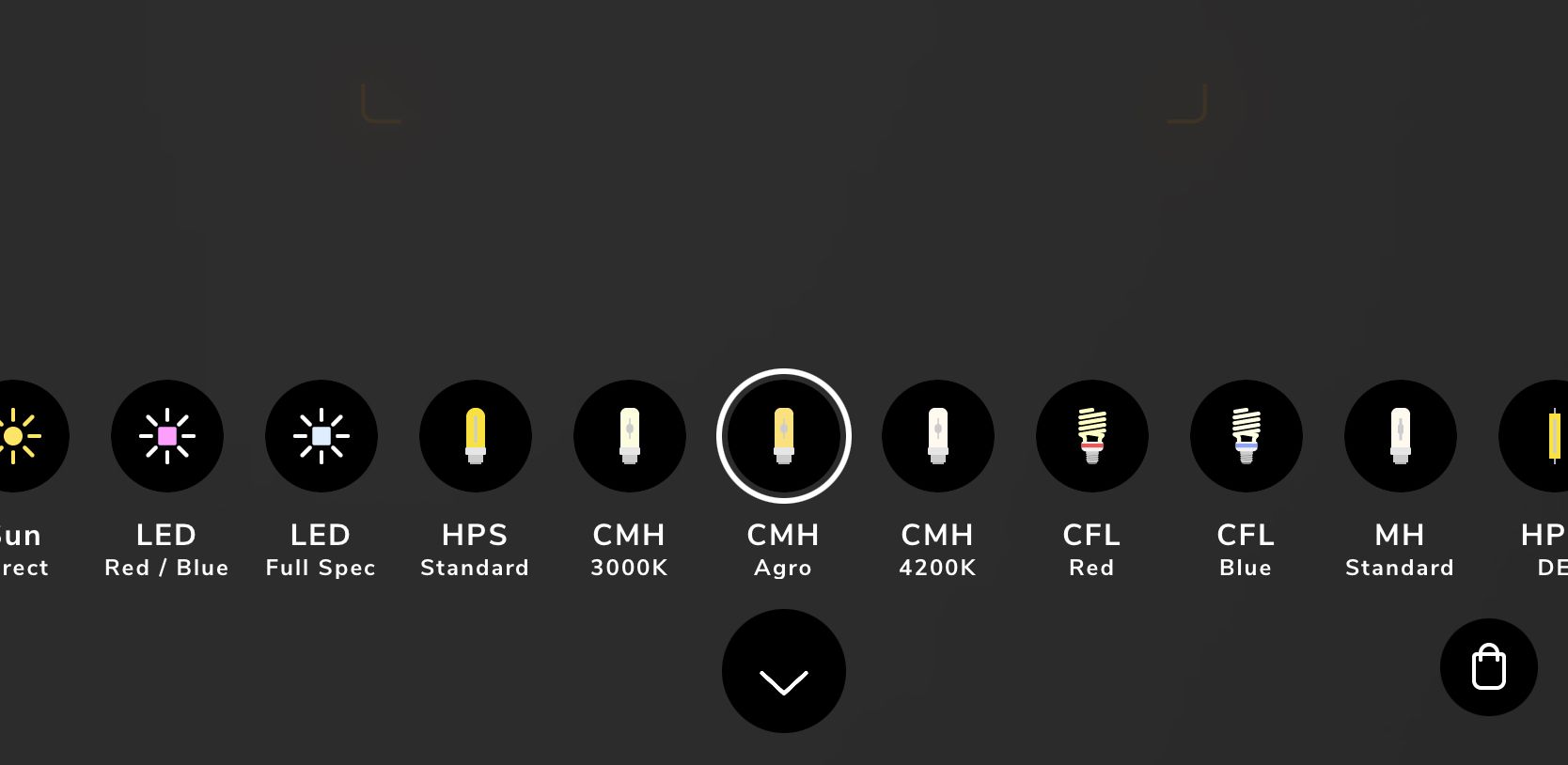
Auto-Translate
Houseplant Lighting Guide
Recommended DLI levels and lighting for your houseplants

Lighting for houseplants is often simplified to broad categories such as "bright sun light", "medium light", and so on. If specific light intensity ranges are published, they are often in the units of lux or foot-candle as such light meters are more readily available. But just using any light won't do the trick and illuminance in lux and foot-candle is a measure for the human eye and not for plants. What your houseplants need is the right intensity of photosynthetically active radiation (PAR) in the right amount (DLI) at the leaves to really let them thrive.
DLI Recommendations
When it comes to plant lighting, the daily light integral (DLI) is the most important measure and the one metric you want to optimize. If your DLI is too low, you can have slow rooting, delayed flowering, weak branching or low flower number. Your plant will be weak as it is unable to produce lots of plant matter. If the DLI is too high it can result in leaf burn or drying out, which will be detrimental as your plant will lose its color while also losing the capability to produce more plant mass.
As houseplants are usually kept with natural sun light, accurately measuring DLI is difficult as the light intensity and light duration changes throughout the day and throughout the seasons.
All you need to do is get DLI in a good range for your specific plant:
| Plant | DLI Level |
|---|---|
| Cactus | 20 – 25 |
| Citrus | 20 – 25 |
| Aloe | 20 – 25 |
| Palm Trees | 18 – 25 |
| Flowering Plants | 15 – 25 |
| Succulents | 15 – 25 |
| Croton | 15 – 20 |
| Jasmine | 12 – 18 |
| Monstera | 8 – 12 |
| Aglaonema | 8 – 12 |
| Ivy | 7 – 12 |
| Fern | 6 – 10 |
| Dracaena | 6 – 14 |
| Parlor Palm | 6 – 12 |
| Aspidistra | 5 – 10 |
| Dragon Tree | 5 – 10 |
| ZZ Plant | 5 – 10 |
| Spider Plant | 5 – 10 |
| Snake Plant | 5 – 10 |
| Peace Lily | 5 – 10 |
| Orchid | 4 – 8 |
Direct or Indirect Light
Whenever using natural sun light, either intense and direct light or less intense indirect light is preferred, depending on the natural occurrence of your specific plant.
Direct Light
In general, high DLI plants are also the ones requiring some direct and strong light. This generally includes the following plants:
- Cactus
- Citrus
- Fig
- Hibiscus
- Kalanchoe
- Succulents
Indirect Light
Plants that require medium or low DLI prefer indirect and less intense light. Still, a little direct sun light is usually acceptable if the plant does not show any signs of burning. This includes the following plants:
- Anthurium
- Alocasia
- Bromeliad
- Money tree
- Monstera
- Orchids
- Peperomias
- Philodendron
- Dracaenas
- Ferns
- Peace lily
- Schefflera
- Spider plant
- Pothos
- Peace lily
- Snake plant
- ZZ plant
Artificial Lighting
Supplementing sun light with artificial lighting is an ideal way to grow plants with high light requirements in less-than-ideal spots all year round. Additionally, using artificial lighting provides a grower with extra benefits of having certain flowering plants in bloom during winter months as well.

When using artificial lighting, the same principles and ranges for DLI apply as with natural sun light. For measurement, you must use the light setting applicable to your grow light. If you are unsure which light setting to choose, check out our guide on which light source to choose:

Bonus Tips
| Keep plants away from air conditioners, heating vents, and doorways |
| Measure repeatedly and regularly |
| Look at what your plants tell you |
| if your plant seems happy and healthy, let it be |


